Heat is one of the essential hair styling tools that almost all women and most men use for styling their hair. Curling, straightening, drying, and dyeing all involve heating. Unfortunately, while we strive to make our hair appear beautiful and striking, we often don’t realize the damage we are causing.
More often than not, the heat is our hair’s worst enemy. The damage caused in just a few days can take months to repair. The heat dries out the hair and makes it look damaged and lifeless. The more heat you use to style your locks, the more damage you cause.
If you’ve been using the wands, irons, and hair dryers for months and your hair seems to look just as good as before, don’t disregard the first warning signs. Eventually, the hair will react to the constant heat application and start causing you problems.
Symptoms of Hair Damage
Most of the time, it’s possible to avoid using heat for styling. Obviously, it’s one of the easiest ways to change your hair looks, but it’s far from the safest. If you have a chance to avoid the heat, do it. Here are ten obvious and not-so-obvious heat-damaged hair symptoms.
1. Excessive Hair Shedding

It’s important to remember that hair shedding is a natural process. An average person loses about 50–100 hairs daily. However, if you feel as if you are shedding more than usual, you might be suffering from heat-induced hair problems.
The easiest way to check if you are shedding more hair than before is to look at the hairs left in the bathtub drain after taking a shower. The clump of hair shouldn’t be more than an inch in diameter. But, of course, if you have really long hair, the numbers change.
2. Split Ends
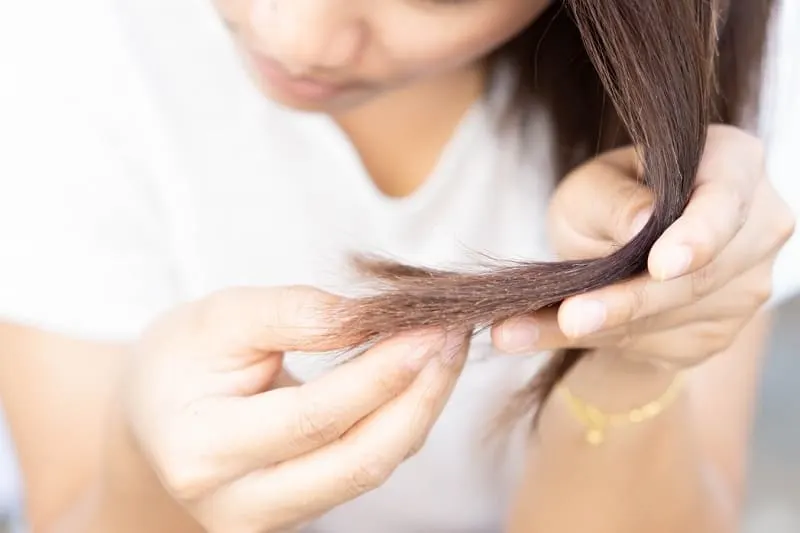
Everyone gets split ends every once in a while. It’s a natural process of hair growth. An average person must get the split ends trimmed every 10 – 12 weeks. Some people don’t experience them for as long as six months.
If you see the split ends appearing too fast, it might be due to heat damage. The hot and dry air causes the hair to split and produce split ends, making your locks look thin and lifeless. This is because the ends of your hair don’t get enough nourishment from the sebum glands, which causes them to become damaged.
3. No More Curls

If you have curly hair and use heat regularly, you can face an unfortunate reverse effect. The curls become larger and might disappear altogether. However, the way it happens is far from what you want to achieve when you dream of straight locks. Instead, you get lifeless and hanging semi-curly pieces of hair.
If you see this symptom, don’t try to use a curling iron to get the locks straight. All you’ll do is just make the problem worse.
4. Porous Hair
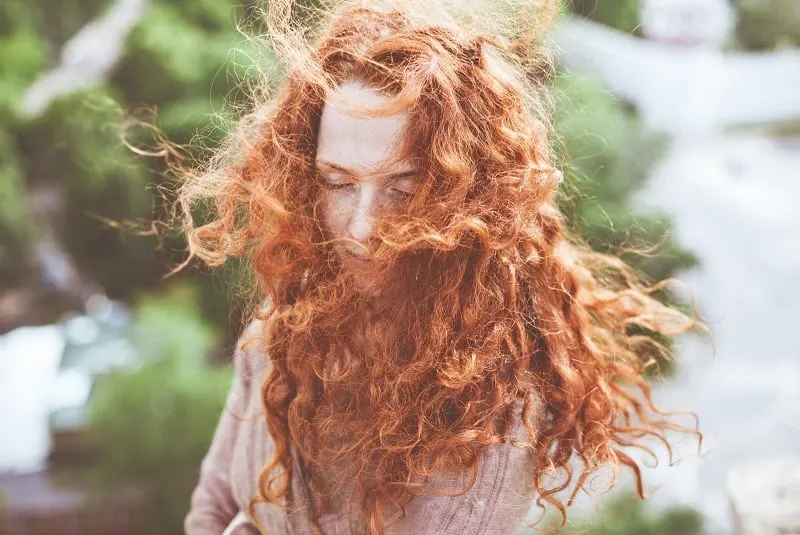
Porous hair can become a big problem for girls who like dyeing. It doesn’t hold on to the color when the hair is too porous, so you need frequent touch-ups. To check if your hair is becoming too porous, you must put a strand into the water. If the strand sinks immediately instead of floating for some time, your hair is excessively porous.
Constant heating can change the hair texture and make your locks prone to breakage. Meanwhile, it keeps them from looking great when dyed.
5. No Shine or Lustre
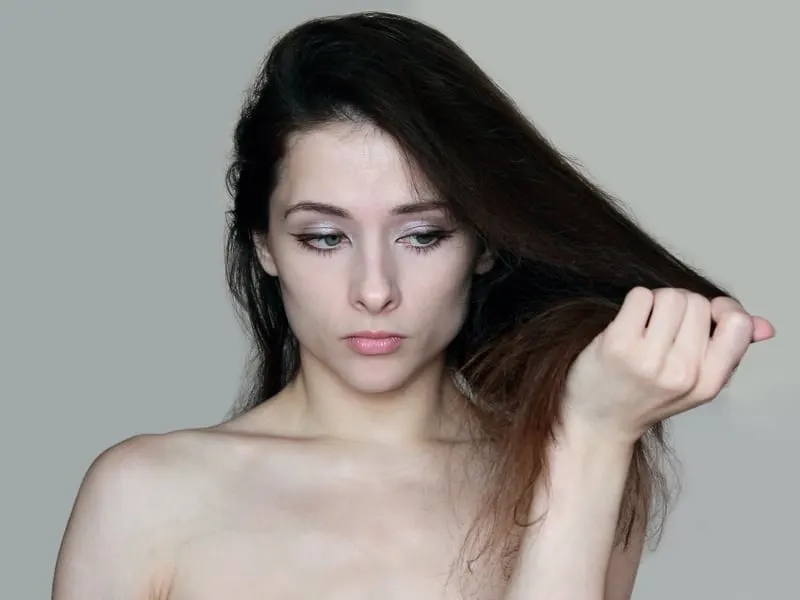
After you wash your hair, it should become shinier than when it’s dirty. If this doesn’t happen, your hair will be damaged. The loss of luster is one of the first signs of heat-damaged hair. Many women turn to using more heat to repair the problem and only worsen the condition. If the luster is gone, it’s hard to get back. So heating should be eliminated immediately.
6. Feeling of Dryness
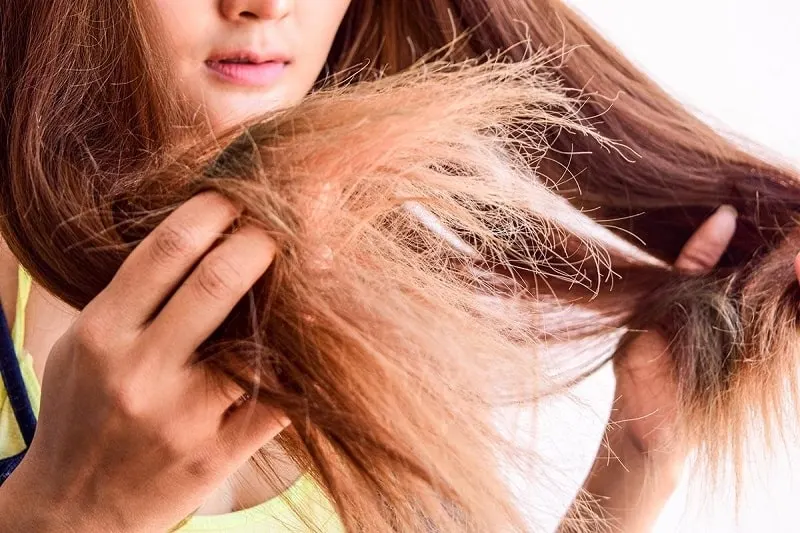
The feeling of dryness is one of the first symptoms of heat-damaged hair. Besides looking dry and dull, the hair feels dry. No matter how many conditioners and leave-in products you use to give the hair some moisture, it stays dry. This means you are overusing the heat.
You can see the first sign of dryness at the washing stage. When you wash your locks, the hair feels tangled and overly thick (like a piece of old rag) until you use the conditioner. This usually happens when the hair is recently dyed. If the reason is dyeing, the dryness will go away after using the conditioner. If it doesn’t, the reason is heat.
7. No More Elasticity
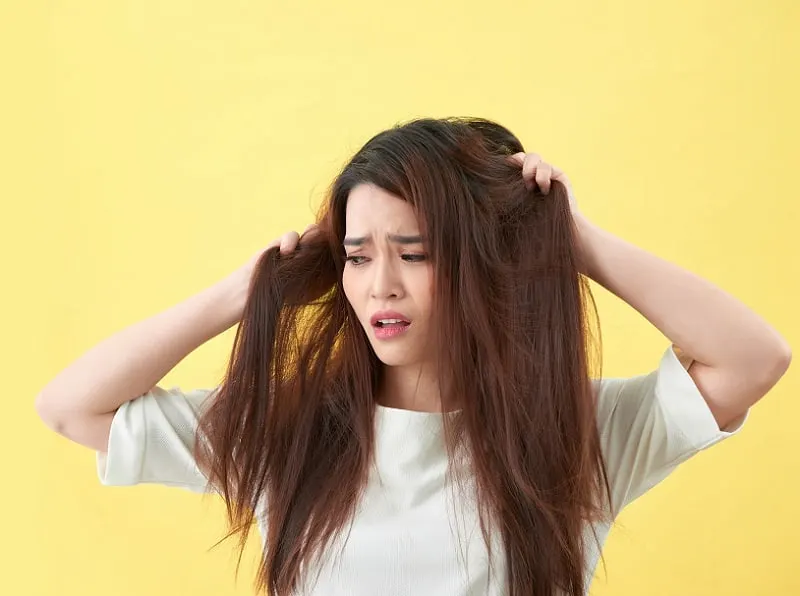
Healthy hair is elastic. When you pull on one hair, it can stretch a little until it breaks. In fact, you need to make a pretty big effort to break a hair. When the locks are damaged by heat, they lose elasticity. If you try pulling on your hair and it breaks immediately, it suffers from the lack of moisture and nutrients, which you took away by heating.
8. Too Tangled
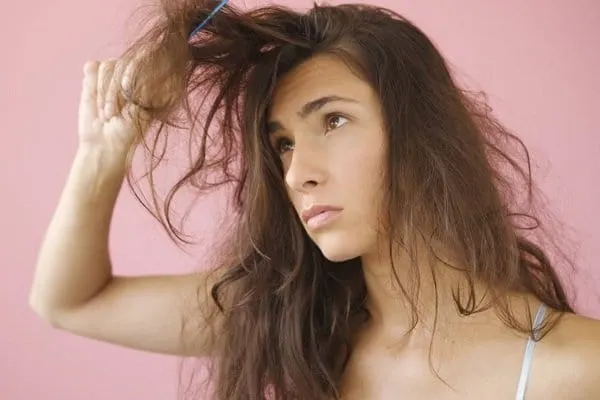
If you are having trouble keeping your hair neat even though you are brushing it regularly, it can be a sign of overheating. Healthy and elastic hair doesn’t get tangled up without reason (like strong wind or restless sleep). If you have to deal with knots regularly, your hair may be damaged.
How to Deep Condition Natural Hair in 4 Easy Steps
9. Hard to Manage
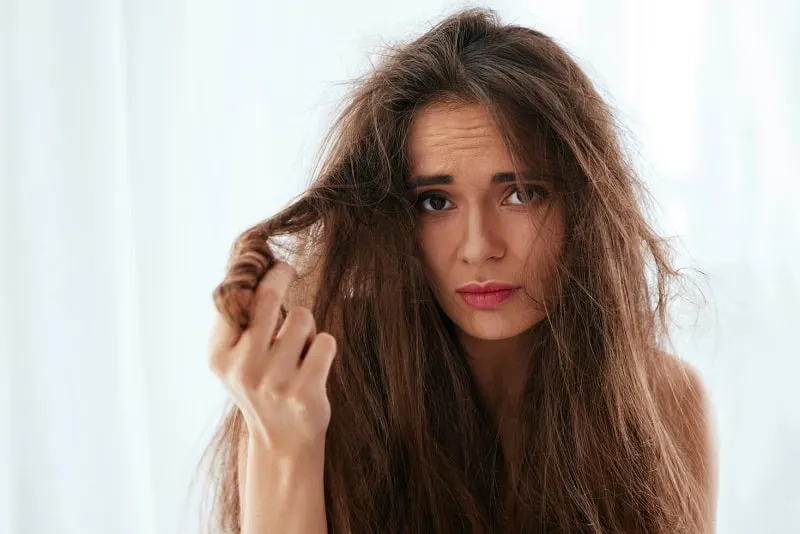
If the 5 minutes you used to spend styling your hair in the morning turn into a tedious half an hour, your locks are most likely damaged and burnt by the heat.
Damaged hair is hard to style. It keeps becoming frizzy, and the strands tend to look messy. If you end up wearing a ponytail just because holding the hair in place is impossible, consider new styling methods that don’t include heat.
10. The Wrong Hair Color
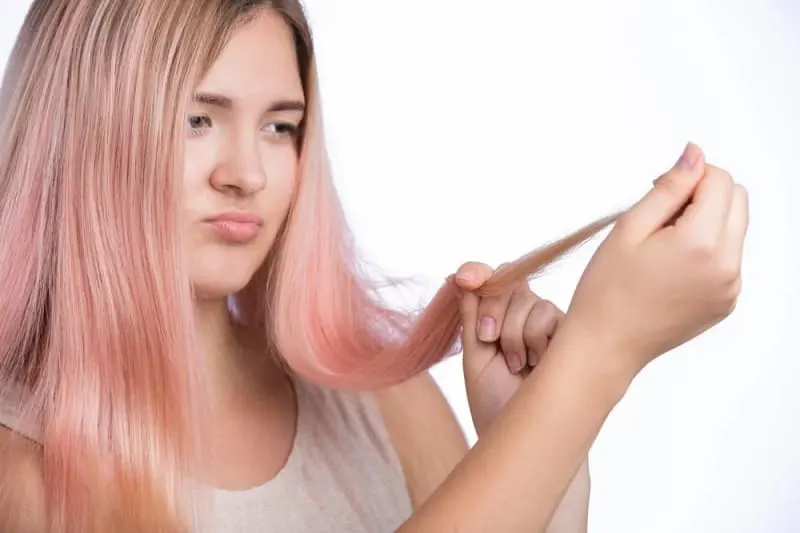
Damaged porous hair absorbs too much color. So if you are using the same dye you’ve always used but have seen a different result, your hair is damaged.
What to Do If Your Hair Is Damaged by Heat
Dry hair, brittleness, split ends are the signs of heat-damaged hair. As soon as you notice these signs, it is time to act.
First of all, you have to stop using hot tools. And if you are not ready to give up the hairdryer, use the lowest temperature.
Heat protection is a must. We should use it not only while styling but also when in the sun. Same as skin, hair needs a shield. Good that nowadays there are many products for hair with UV protection too.
Unfortunately, we cannot fully restore the hair damaged by heat. But we can change the way it looks by changing the hair care.
In general, hair damaged by heat loses the shiny, healthy look. Dryness is the first stage of damage. At this point, many treatments can help. The task here is to nourish the hair and restore its structure.
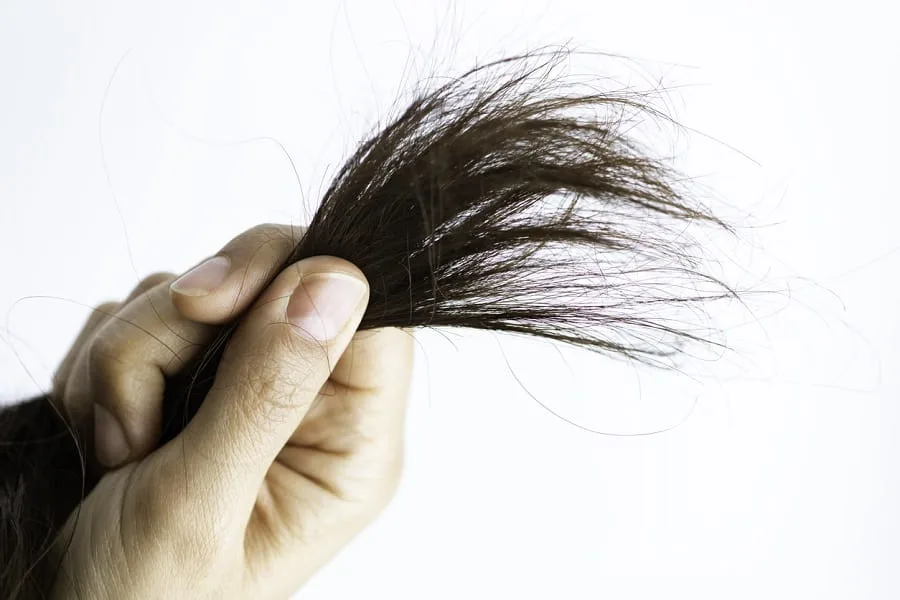
Here are some tips that help to take better care after heat-damaged hair.
- Start with revitalizing masks with nourishing oils and deeply hydrating ingredients. Make it two times per week at least. It will restore the softness and bring the shine back.
- Use the oils and serums for dry hair to nourish the length and hide the split ends. Many oils can help, such as argan oil, macadamia, coconut oil, etc.
- Apply shampoo only on the scalp and roots area when washing the hair. Some hairdressers suggest conditioner application on the length before shampoo to protect hair during the washing.
- Choose repair conditioner for damaged hair.
- A Leave-in conditioner or cream can help a lot as well. They moisturize the hair and protect it from the environment throughout the day.
- Do not brush the hair when it’s wet, as it is more vulnerable and easy to break if you pull.
As you can see, home care is a big help, but it works much better together with professional care. For example, many salon treatments contain natural keratin that goes deep under the cuticle and works from the inside. That makes the hair thicker. But do not get fooled by procedures that restore hair from the first time. Some treatments contain harmful ingredients and require high heat to do the technique, which may cause more hair damage.
At some point, we have to cut off the damaged hair. Recommended doing a haircut once every 1.5 months. Otherwise, split ends will start to break on their own, and the haircut will look shapeless.
These heat-damaged hair symptoms come one by one or in bulk. If you realize that you have head-damaged locks, stop using all the heat-producing styling tools and start nourishing your hair.
Related Topics
